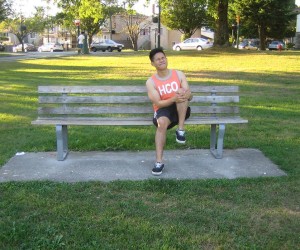A lateral knee ligament sprain involves a tear to the ligament on the exterior of the knee and most likely to occur after sustaining a direct blow to the interior part of the knee. To learn to recognize and manage muscle injuries, enroll in a first aid and CPR course near you.
Symptoms
The symptoms of a lateral knee ligament sprain tend to vary from mild to full rupture of the ligament. A lateral knee ligament sprain is categorized into grade 1, 2 or 3 depending on the extent of the injury.
Grade 1 – There is tenderness on the exterior of the knee over the ligament. In most cases, there is minimal or no swelling at all. Once the knee is bent to 30 degrees and force is applied to the interior of the knee which puts the ligaments under stress, pain is felt but there is no joint laxity.

Grade 2 – Significant tenderness on the exterior of the knee over the lateral ligament. A certain degree of swelling is seen over the ligament. If the knee is stressed for grade 1 symptoms, there is pain and some laxity in the joint, but there is a definite end point that indicates that the ligament is still intact. It simply means that the knee could not be bent sideways entirely.
Grade 3 – This is a full tear of the ligament and pain can vary and actually less than a grade 2 sprain. When the knee is stressed, there is significant joint laxity. In addition, the individual will complain of an unstable knee.
Treatment of lateral knee ligament injury
The treatment is similar to all knee ligament injuries. If swelling is present, you can use the RICE method (rest, ice, compression, elevation). The individual should stop playing the sport that causes the injury. In most cases, using a hinged knee brace is recommended in order to support the joint, especially for grade 2 and 3 injuries.
The doctor will assess the extent of damage. This is carried out by applying force on the interior surface of the knee joint and comparing its laxity to the unaffected knee. In severe cases, an X-ray or MRI will be required. Depending on the severity of the injury, various treatment options can be started.
For grade 1 and 2 injuries, conservative treatment options are preferred. These must be performed up to 8 weeks and can include laser treatment or ultrasound as well as NSAIDs, massage and a full rehabilitation program that includes strengthening and proprioceptive exercises. Supportive taping for the lateral ligaments can also provide protection but also useful when the individual returns to normal training.
As for grade 3 injuries, especially those in which the ACL or PCL are involved, surgery might be required in order to prevent future instability. This might include suturing or stitching of the ripped ends or reconstruction of the ligament with a part of a tendon. The recovery period of these injuries is usually slower than the conservative methods and it might require a number of months before the individual can return to his/her sport.
